The Prairie region is a geographically large place and a busy place for arborists and urban foresters. We all are dealing with the pandemic, as well as other challenges this year. COVID-19 responses differed slightly from province to province, with Manitoba and Saskatchewan less affected by cases than Alberta. All three provinces deemed arboriculture and landscaping to be essential services that could remain open. Only Manitoba specifically mentioned “arboriculture” as an essential service, while Saskatchewan and Alberta put tree operations with “property maintenance” and “construction including maintenance and repair.” This lack of industry-specific recognition of “arboriculture” by the provinces of Alberta and Saskatchewan remains a curious but serious challenge, especially when it comes to being recognized as a “stand-alone” trade.
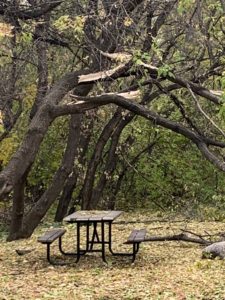 In Manitoba, cleanup from the storm in October stretched well into the winter and delayed Dutch elm disease (DED) removals in the City of Winnipeg by a few months, being back on track as of this June. The City is piloting a new methodology developed in partnership with the
In Manitoba, cleanup from the storm in October stretched well into the winter and delayed Dutch elm disease (DED) removals in the City of Winnipeg by a few months, being back on track as of this June. The City is piloting a new methodology developed in partnership with the
University of Winnipeg to identify DED brood trees and prioritize those for rapid removal, which should control DED by limiting the populations of bark beetles in these brood trees once they are identified. Reforestation continues to be a serious concern in Winnipeg with the Million Tree Challenge announced in 2019 to plant one million trees in Winnipeg over the next 20 years. One certainty is that with the increased need for removals from DED, emerald ash borer and the possible increased frequency of big storms, it will be difficult to keep up with tree removals, let alone replacements. 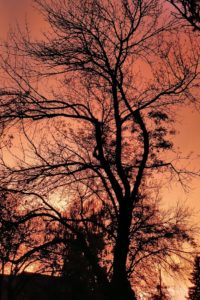 According to Martha Barwinsky, Winnipeg’s city forester, in 2018, only 44% of trees removed were replaced. Now with all these new challenges, including the pandemic, City of Winnipeg officials are worried that the momentum for the Challenge will be affected, especially with public engagement. The development of a 20-year Comprehensive Urban Forest Strategy will continue, in hopes of decreasing the negative impact of these types of challenges in the future.
According to Martha Barwinsky, Winnipeg’s city forester, in 2018, only 44% of trees removed were replaced. Now with all these new challenges, including the pandemic, City of Winnipeg officials are worried that the momentum for the Challenge will be affected, especially with public engagement. The development of a 20-year Comprehensive Urban Forest Strategy will continue, in hopes of decreasing the negative impact of these types of challenges in the future.
Outside of Winnipeg, Sima Feuer with the Government of Manitoba says numbers are within historic averages for DED and that it is business as usual with each of the 38 separate provincially managed/ local community DED programs. The province has been active in these communities since 1975, partnering, doing research and supplying information and assistance to property owners, municipalities, and local groups. Because of their work together, the loss of trees due to DED has been successfully limited and “most communities that manage DED have been able to retain a large portion of their mature elm tree population.”
In the private sector, Matt Vinet of Green Drop in Winnipeg reports that most arborists feared a huge slow-down or even shut-down when COVID-19 first hit, which would have been economically disastrous to smaller sized 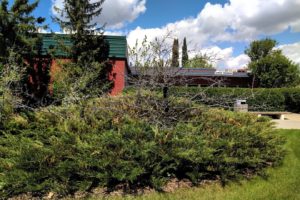 companies. Vinet and most other Manitoba arborists are busier now with residential work, especially because of the many storm-damaged residential trees left untouched over the winter. For residents, the impact of being cooped up at home for months has translated itself into remarkable increases in sales at garden centres and tree nurseries throughout the Prairies, and a very noticeable increase in the demand for arboricultural services. Greater volume of residential work in the private sector has been the welcome news arborists needed to offset the sadness brought about by cancellations of many cherished events, such as Arbor Day, or professional development and training opportunities and conferences.
companies. Vinet and most other Manitoba arborists are busier now with residential work, especially because of the many storm-damaged residential trees left untouched over the winter. For residents, the impact of being cooped up at home for months has translated itself into remarkable increases in sales at garden centres and tree nurseries throughout the Prairies, and a very noticeable increase in the demand for arboricultural services. Greater volume of residential work in the private sector has been the welcome news arborists needed to offset the sadness brought about by cancellations of many cherished events, such as Arbor Day, or professional development and training opportunities and conferences. 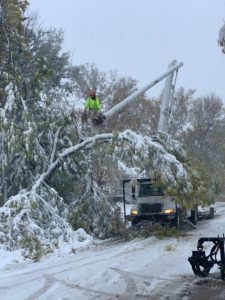 Commercial companies like Green Drop in Winnipeg have, in the last year, being able to capitalize on the abundance of work from City contracts by purchasing a large, truck-mounted robotic arm with a clamping, hydraulic chainsaw cutting head, which greatly speeds up tree removal operations with increased safety to the workers, especially in severe winter weather conditions. With the winter season conditions all but shutting down the arborist industry, this type of machinery is being looked at closely by many companies for future potential uses.
Commercial companies like Green Drop in Winnipeg have, in the last year, being able to capitalize on the abundance of work from City contracts by purchasing a large, truck-mounted robotic arm with a clamping, hydraulic chainsaw cutting head, which greatly speeds up tree removal operations with increased safety to the workers, especially in severe winter weather conditions. With the winter season conditions all but shutting down the arborist industry, this type of machinery is being looked at closely by many companies for future potential uses.
In Saskatchewan, the SOS Elms Coalition has changed its name to SOS Trees Coalition with a slight expansion in their scope of operations to advocate for all trees and not just elms, while maintaining what they have been doing best all across the province since 1992: advocating for responsible management and bylaw protection of urban trees, and promoting public understanding and appreciation of the urban forest. Saskatchewan is one of the most barren and forbidding environments for growing of trees and new developments can and should seek to preserve existing trees! It is a place where any tree, even a Manitoba maple, is infinitely better than no tree at all. The group is intimately aware of the implications of consequences of premature tree loss on a community: 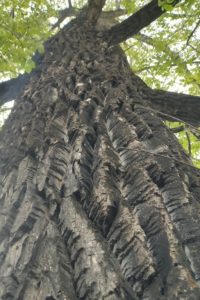 loss of shade, screening, sound attenuation, pollution control and lack of green ambience can all have a negative effect on human health including mental health. They have also successfully responded to the impact of prematurely losing trees that otherwise would have had a much longer lifespan by actively lobbying for stronger construction standards and bylaws, as well as reporting on any needless tree damage or tree destruction to raise awareness.
loss of shade, screening, sound attenuation, pollution control and lack of green ambience can all have a negative effect on human health including mental health. They have also successfully responded to the impact of prematurely losing trees that otherwise would have had a much longer lifespan by actively lobbying for stronger construction standards and bylaws, as well as reporting on any needless tree damage or tree destruction to raise awareness.
According to their website, the City of Saskatoon states that the number of tree removals continues to climb and far exceed rates of replanting. In 2018, for example, 2,289 trees were removed and only 783 planted, whereby 1,600 of those removals were due to cottony ash psyllid, an invasive insect. If this rate of removal continues, there will be fewer trees in a place where they are already scarce, to begin with. The pace of development and invasive pests and diseases are consuming large numbers of trees before they have a chance to mature. While it may simply be funding challenges that prevent a community from keeping up with the total tree removals that are a safety necessity, communities can also be overwhelmed by the sheer amount of work out there that must get done. Municipalities coping with profound tree loss are faced with a loss of tree benefits, as well as the increased costs to remove and replace trees.
In Regina, both the ISA Prairie Chapter annual conference and the annual Tree Climbing Championship have been cancelled and are rescheduled to 2021. The Prairie Chapter Tree Climbing Championship will be held on the grounds of the Saskatchewan Provincial Legislature, a high-profile place that is sure to get plenty of media attention for climbing arborists and arboriculture on the Prairies! Let us remain optimistic that life will normalize by then.
Back in my home province of Alberta, the COVID-response has impacted everything from the way we work and do business, to the late re-hiring of seasonal parks and urban forestry staff in Calgary, Edmonton, and other municipalities. The cancellation of Arbor Day events in both Edmonton and Calgary and the postponement of many volunteer tree planting events with Tree Canada due to the pandemic, has been disappointing to many of us who have been involved with both organizations for decades.
Despite the additional challenge of getting essential work done during a pandemic, the City of Edmonton is continuing to upgrade its Urban Forest Asset Management Plan which includes updating its estimated useful lifespan estimates for common trees and cultivars planted in the Edmonton area. This document will serve as a blueprint for planning the planting of species that thrive in Edmonton’s harsh climate.
With the trees throughout Alberta, arborists are challenged by greatly increased occurrences of severe winterkill and dieback due to winter desiccation on fruit trees and shrubs, newly planted trees, and all kinds of trees under stress. The winter of 2019-2020 will be remembered as one of those “test” winters that weeded out many half-hardy and marginally hardy species and varieties. Most Alberta arborist companies are as busy as ever, unfortunately, the lack of skilled labour and trained professional arborists continues to limit and hinder the scope of our working capacity. Although robotic-arm tree dismantlers greatly increase safety and efficiency of doing tree removals, correctly pruning to rejuvenate tender winterkilled shrubs and fruit trees is an acquired skill of only knowledgeable arborists and sadly, are an increasingly rare and vanishing breed of skilled worker not just in Alberta and the Prairies, but also in the rest of Canada altogether.
“Arborist” is an unrecognized trade in Alberta, and despite there being many good jobs and training and professional development opportunities, very few young people are even aware that this is an above-average paying profession with long-term career potential and great job satisfaction. In fact, across the Prairies and most likely the rest of Canada, there is a shortage of well-educated, knowledgeable, and capable tree workers. This fact, coupled with greatly increased demand for arboricultural services due to the increased frequency of natural weather disasters and introduced insects and diseases in all three provinces and the rest of Canada, Canadian employers are eager to hire more crews to capitalize on the greater demand, but no qualified workers to be found. Whereas in the past some urban tree industry employers in Canada may have been able to bring qualified foreign workers from outside Canada to do the work, the new international travel restrictions will make this practice untenable, at least in the next foreseeable 6-12 months.
The implications are clear, rising demand for professional arboricultural services across Canada will begin to put more pressure on a dwindling labour market for employers to hire qualified arborists for urban forestry operations. With increased demand comes increased costs which will have to be passed onto the consumer. With municipalities being the largest consumers of arboricultural services in Canada, including utility line clearance, it would behoove municipalities to seek better training for workers and to promote the industry to keep urban forestry affordable and sustainable. Such things as promoting a Red Seal apprenticeship for arborists and national arboricultural safety standards would go a long way to address these challenges.
Back to all articles